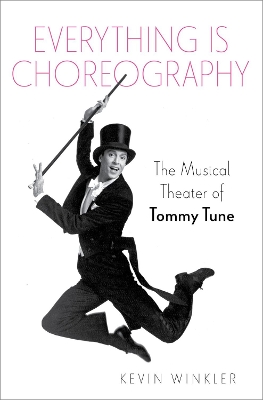Broadway Legacies
2 total works
Bob Fosse (1927-87) is recognized as one of the most significant figures in the post-World War II American musical theater. With his first Broadway musical, The Pajama Game in 1954, the "Fosse style" was already fully developed, with the hunched shoulders, turned in stance, and stuttering, staccato jazz movements. Fosse moved decisively into the role of director with Redhead in 1959 and was a key figure in the rise of the director-choreographer in the
Broadway musical. He also became the only star director of musicals of his era-a group that included Jerome Robbins, Gower Champion, Michael Kidd, and Harold Prince- to equal his Broadway success in films.
Following his unprecedented triple crown of show business awards in 1973 (an Oscar for Cabaret, Emmy for Liza With a Z, and Tony for Pippin), Fosse assumed complete control of virtually every element of his projects. But when at last he had achieved complete autonomy, his final projects, the film Star 80 and the musical Big Deal, both written and directed by Fosse, were rejected by audiences and critics.
A fascinating look at the evolution of Fosse as choreographer and director, Big Deal: Bob Fosse and Dance in the American Musical considers Fosse's career in the context of changes in the Broadway musical theater over four decades. It traces his early dance years and the importance of early mentors George Abbott and Jerome Robbins on his work. It examines how each of the important women in his adult life-all dancers-impacted his career and influenced his dance aesthetic. Finally,
the book investigates how his evolution as both artist and individual mirrored the social and political climate of his era and allowed him to comfortably ride a wave of cultural changes.
Broadway musical. He also became the only star director of musicals of his era-a group that included Jerome Robbins, Gower Champion, Michael Kidd, and Harold Prince- to equal his Broadway success in films.
Following his unprecedented triple crown of show business awards in 1973 (an Oscar for Cabaret, Emmy for Liza With a Z, and Tony for Pippin), Fosse assumed complete control of virtually every element of his projects. But when at last he had achieved complete autonomy, his final projects, the film Star 80 and the musical Big Deal, both written and directed by Fosse, were rejected by audiences and critics.
A fascinating look at the evolution of Fosse as choreographer and director, Big Deal: Bob Fosse and Dance in the American Musical considers Fosse's career in the context of changes in the Broadway musical theater over four decades. It traces his early dance years and the importance of early mentors George Abbott and Jerome Robbins on his work. It examines how each of the important women in his adult life-all dancers-impacted his career and influenced his dance aesthetic. Finally,
the book investigates how his evolution as both artist and individual mirrored the social and political climate of his era and allowed him to comfortably ride a wave of cultural changes.
Grand Hotel. My One and Only. Nine. The Best Little Whorehouse in Texas. A Day in Hollywood/A Night in the Ukraine. The Will Rogers Follies. For two decades, Tommy Tune was the maestro presiding over a string of glittering Broadway musicals that took the tradition of complete musical staging by a director-choreographer into a new era defined by spectacle and technology. He was last in a grand lineage led by Jerome Robbins, Gower Champion, Bob Fosse, and
Michael Bennett, but also provided a link to a new generation of choreographers-turned-directors like Susan Stroman, Jerry Mitchell, and Casey Nicholaw.
Unlike his fellow director-choreographers, Tune also maintained a successful performing career. His nine Tony Awards (plus a tenth, for Lifetime Achievement) were earned across four categories, not only for choreography and direction, but also as both featured and lead actor in a musical, for Seesaw and My One and Only—a distinction no one else can claim.
Tune took the musical forward by looking backward, bringing satiric energy and contemporary style to a trove of show business antecedents—from clog dancing to showgirl formations, from precision kick lines to Fred Astaire and Ginger Rogers-style ballroom glides. He did the same with his concert and cabaret performances, drawing on classics from the Gershwins, Irving Berlin, and Cole Porter and performing them not as nostalgia but as vital, immediate statements of personal philosophy.
Everything is Choreography: The Musical Theater of Tommy Tune is the first full scale book about the career of this prodigious artist. It celebrates and examines with a critical eye his major projects, and summons for readers a glorious period of dance, performance, and theatrical imagination.
Michael Bennett, but also provided a link to a new generation of choreographers-turned-directors like Susan Stroman, Jerry Mitchell, and Casey Nicholaw.
Unlike his fellow director-choreographers, Tune also maintained a successful performing career. His nine Tony Awards (plus a tenth, for Lifetime Achievement) were earned across four categories, not only for choreography and direction, but also as both featured and lead actor in a musical, for Seesaw and My One and Only—a distinction no one else can claim.
Tune took the musical forward by looking backward, bringing satiric energy and contemporary style to a trove of show business antecedents—from clog dancing to showgirl formations, from precision kick lines to Fred Astaire and Ginger Rogers-style ballroom glides. He did the same with his concert and cabaret performances, drawing on classics from the Gershwins, Irving Berlin, and Cole Porter and performing them not as nostalgia but as vital, immediate statements of personal philosophy.
Everything is Choreography: The Musical Theater of Tommy Tune is the first full scale book about the career of this prodigious artist. It celebrates and examines with a critical eye his major projects, and summons for readers a glorious period of dance, performance, and theatrical imagination.

